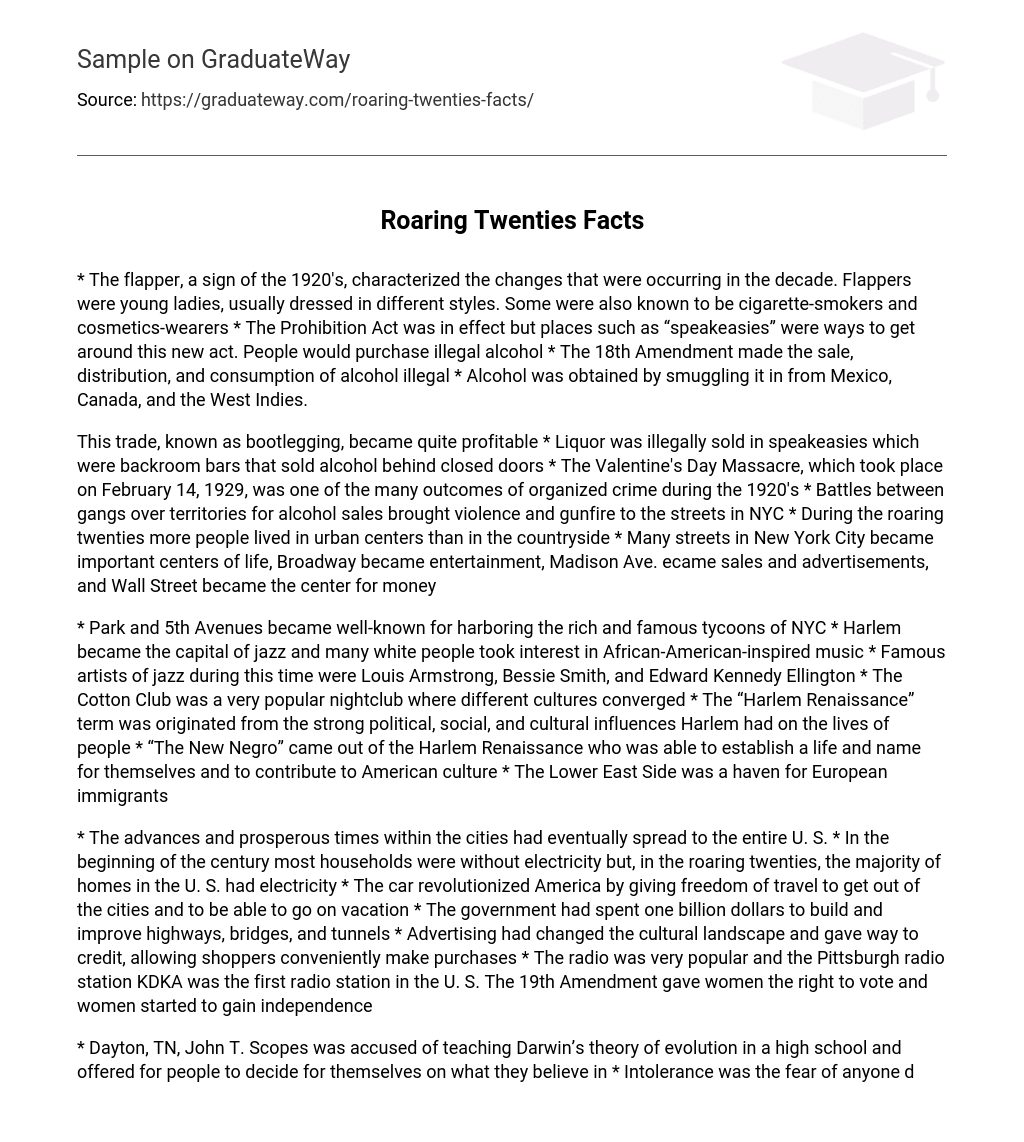The flapper, a symbol of the 1920’s, represented the transformations happening during that decade. Flappers were young women who dressed in various styles and were often seen smoking cigarettes and wearing cosmetics.
Despite the Prohibition Act being in effect, “speakeasies” emerged as a means to bypass this new law. People would buy illegal alcohol from Mexico, Canada, and the West Indies through smuggling. Additionally, the 18th Amendment prohibited the sale, distribution, and consumption of alcohol.
In the 1920s, illegal trade known as bootlegging was a highly profitable venture. Speakeasies were secret bars that clandestinely sold alcohol and served as the main venues for this underground liquor commerce. Organized crime during this period led to infamous events like the Valentine’s Day Massacre on February 14, 1929. The competition among gangs vying for control over territories in alcohol sales resulted in violence and gunfire on New York City streets. In the exciting era of the roaring twenties, urban centers experienced greater population growth compared to rural areas. Various streets in New York City became significant hubs representing different aspects of life: Broadway represented entertainment, Madison Ave. represented sales and advertisements, and Wall Street stood at the center of financial activities.
Park and 5th Avenues in NYC became famous for attracting wealthy tycoons. Harlem emerged as the center of jazz, captivating white individuals with its African-American-influenced music. Renowned jazz musicians like Louis Armstrong, Bessie Smith, and Edward Kennedy Ellington thrived during this time. The Cotton Club, a well-known nightclub, acted as a melting pot for diverse cultures. The term “Harlem Renaissance” originated from the profound political, social, and cultural impacts that Harlem had on people’s lives. This period gave rise to “The New Negro,” who not only established their own identity and reputation but also made significant contributions to American culture. Lastly, the Lower East Side provided a safe haven for European immigrants.
During the early 20th century, advancements in cities spread across the entire U.S. Initially, electricity was lacking in most households; however, by the 1920s, a majority of homes were equipped with this modern convenience. Cars revolutionized America by providing freedom of travel and enabling vacations. The government invested one billion dollars in constructing and improving highways, bridges, and tunnels. Advertising played a crucial role in shaping the cultural landscape and facilitating the rise of credit for more convenient shopping experiences. KDKA in Pittsburgh became the first radio station in the U.S., gaining immense popularity. Additionally, women achieved greater independence with their suffrage rights granted by the 19th Amendment.
* In Dayton, TN, John T. Scopes faced allegations of teaching Darwin’s theory of evolution in a high school and encouraged individuals to form their own beliefs * Intolerance extended to anyone different, including African-Americans and immigrants, with the Ku Klux Klan serving as an example * The Ku Klux Klan experienced growth and reached a membership of over 5 million during the 1920’s * Sports produced American heroes such as Babe Ruth and Charles Lindberg during this decade * The 1920’s were characterized by prosperity in America for most, marked by notable advancements and progress. Living standards and incomes also saw an increase.





